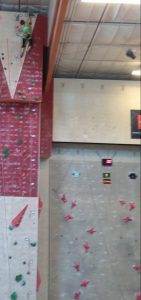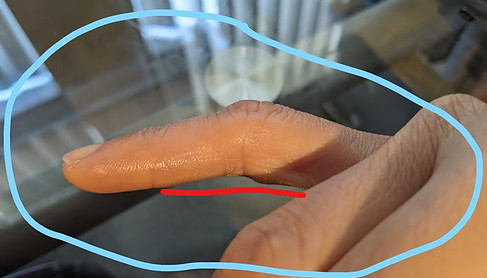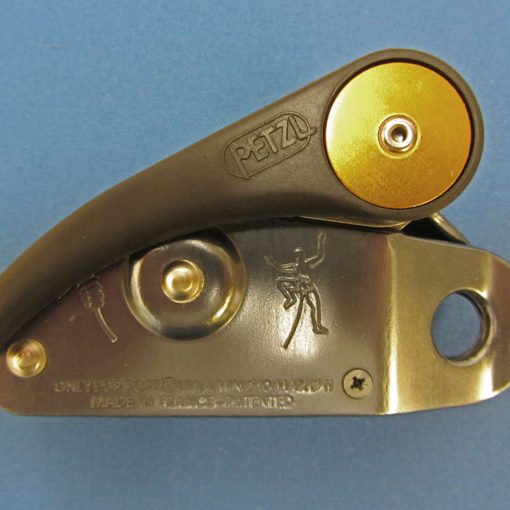Speed climbing is the act of climbing to the top as fast as you can to achieve the best time. The climbing can be done outdoor or indoor on rocks, walls, and/or poles. In this article I will discuss what is speed climbing for indoor competition on a standardized climbing wall.
Standardized Speed Climbing Wall
The competition speed climbing is governed by the International Federation of Sport Climbing (IFSC) on 15m or 49.2 ft artificial walls. The wall is a slightly overhanging IFSC certified wall with belaying from the top. There are two types of belaying: Top rope manual belaying or auto belaying.
For safety reason, it takes up to two people to belay manually and keep up with the speed climber. The belayers’ goal is to keep minimal slack from the rope for the climber. At a fast moving speed, the rope build slack very quickly. With two belayers pulling help prevent rope entanglement and prevent the climber to fall from a long distance.
The auto belayer is another option to keep up with the belayer. It is actually more efficient than having an actual belayer. The auto belay rope retract and keep up with the climber much quicker than manual belayers can. It is now a common system being used at US competition championship.
The holds, the order of the holds, and the route are always the same. There is no official grade for the speed route. The difficulty rating is around F6b which is a French climbing grade equivalent to North America grade of 5.10c. The hold itself is special shape which includes a jug, punch, and slopers depending on where it is grabbed. 
The climbing time can be determined by mechanical automated electric timing system or manual timing like a stopwatch. The automated system is generally accurate to one hundredth of a second and commonly being used for a speed competition. Occasionally an automated timing system suffers from a malfunction and cannot be repaired, manual timing system would be put in place. For manual timing, three timers (a judge and two assistants) operate stopwatches per route. The average of the stopwatches shall be recorded.
As of 04/28/2017, the men’s 15 meter speed world record with 5.48 seconds is an Iranian climber, Reza Alipourshenazandifar and the women’s record with 7.46 seconds is Luliia Kaplina from Russia.
Speed Competition Procedures
There are detailed rules and procedures for speed competition available online – Climbing Rule Book. In this article, I will share the highlights of the procedures.
Formats
There are two speed climbing routes and there are two formats may be used for the competition. The competitors will climb two routes. The speed climbing judge usually decide the format. The two formats are continuous format and pairings format.
The continuous format includes the first competitor climbing route #1 against a “rabbit” on route #2. The rabbit is not another speed competitor. He or she can be any climber other than speed who wants to participate. Once the first competitor complete route #1, he or she shall climb route #2 against the next competitor on route #1. There shall be a continuous line of competitors with no gap in between age categories. The last speed competitor shall climb route #2 against a “rabbit” on route #1.
The pairings format involved randomized pair of running order of competitors in each age category. The individuals in each pair shall compete against each other on both routes. If there is an odd number of competitors, the first competitor will climb against a “rabbit”.
Successful and Unsuccessful Climbs
The competitors shall be rank accordingly to their fastest time of the two routes. A successful attempt for each route is when the competitor climbed in accordance to the rules and struck the timing switch or the finish box with his/her hand. Their time is recorded.
Yes, there are unsuccessful attempts. These attempts do not count as completing the route and receive a score “0”. The unsuccessful attempts are
- Falls before touching the finish box or finish timing switch
- Use holds or area out of bounds
- Use side edges or top rope edges
- Touches the ground with any part of the body after having started
- Uses any artificial aid
- False start (the first false start can be re-do, the second false start is considered to be disqualified)
Championship Levels
Similar to Sport Climbing Competition, Speed Climbing Competition starts at the Regional level. However, speed competition is less popular than sport competition in the US so Regional Championship is open to all USA Climbing members. The competitors would climb two routes for Regional Championship and rank accordingly to their recorded times. All USAC members that competed in Speed climbing at their Regional Championship receive invitations to the Divisional Championships.
The Divisional Championship consists of two rounds, qualification and final. At the finals, the pairings for the final round shall be based on the ranking from the qualification round. The competitors climb in the descending order:
- 10 vs 9
- 8 vs 7
- 6 vs 5
- 4 vs 3
- 2 vs 1
The awards are based on the ranking of the final round. The National Championship invitations are extended to all USAC members who competed in the speed climbing at their Divisional Championship.
The speed for youth National Championship consists of three rounds of competition: qualification, semi-final and final. The speed competitors will climb two routes. The top twenty fastest times shall advance from qualification round to the semi-final round. For the semi-final round, the competitors climb two routes. Similar to the Divisional final, the competitors are paired up in descending order of ranking:
- 20 vs 19
- 18 vs 17
- 16 vs 15
- 14 vs 13
- 12 vs 11
- 10 vs 9
- 8 vs 7
- 6 vs 5
- 4 vs 3
- 2 vs 1
The top ten fastest times will compete in the final round. See Climbing Rulebook in case of a tie. Competitors advancing to the final round shall climb in the descending order of ranking in the semi-final:
- 10 vs 9
- 8 vs 7
- 6 vs 5
- 4 vs 3
- 2 vs 1
The National Championship awards and invitations to be a member of the U.S. National Team are based on a competitor’s fastest time of the two routes from the final round.
Speed Climbing in the US
The speed climbing culture is more prevalent in Europe. The world speed climbing record holders are from Iran (Men’s 15 meter) and Russia (Women’s 15 meter). In general, speed climbing is not as popular in the US. Most climbing gyms do not have the speed setup course available for the public.
 There is one youth team that I am aware of – Stone Summit from Georgia within the deep south competition region has a speed course available for their team members to train. There are probably more rock gyms in the west coast equipped with speed climbing course that I have not visited.
There is one youth team that I am aware of – Stone Summit from Georgia within the deep south competition region has a speed course available for their team members to train. There are probably more rock gyms in the west coast equipped with speed climbing course that I have not visited.
Speed climbing is quickly being noticed because of the preparation for the coming 2020 summer Olympic games. Speed, sport, and bouldering are the three required disciplines. Many sport and bouldering climbers will now require to start training for speed climbing in order to qualify for the Olympics. Speed climbing will require additional training routines.
Benefits
The sequence of a speed climbing route is zigzag. The driving force comes from the quad and core. The footwork needs to be precise in a smooth flowing motion. Because all the holds are standardized and they stay the same for all speed routes, it is good to be familiar with the climbing patterns with your mind and body.
It is true with muscle memory. Occasionally, when I have climbed a route before, my arms and feet remember where to position themselves. Unconsciously, I follow through instinctively without having to figuring out the route again. The same aspect applies to speed climbing routes.
There are three benefits that I can think of in participating speed climbing practices:
- Mental – When practice with climbing in a smooth flowing motion, good focus with a clear mind is very helpful. This help transcend into other climbing disciplines such as sport and bouldering.
- Physical – The explosive propulsion of the strong thigh and core throughout the route strengthen dynamic moves when climbing hard to reach holds for sport or bouldering. The body and momentum timing is also crucial in moving efficiently and effectively.
- Stamina – In order to achieve the best and fastest time climbing up a speed route, a climber often have to practice climbing that same route over and over again many times in one session. This help build stamina, strength, and muscle memories. It is definitely helpful for climbing long tall walls especially multi-pitch climbing outdoor.
Conclusion
I am aware of speed climbing when my son first joined Aiguille climbing team. The gym we practiced in Orlando does not have a dedicated wall for speed climbing. However, they do have speed climbing holds which sometimes setup as a route for climbers to climb. My son often competed in Regional speed competition just for fun. However, he was not interested in pursuing it further at a higher level. There was not much of a push for speed climbing until 2016.
In August 2016, rock climbing has been approved by the International Olympic Committee for 2020 Olympics. Speed climbing is one of the three disciplines a competitor must compete in order to be qualified for the Olympics. I would imagine speed training will be on the radar for all competitors. More gyms in the US will be building walls dedicated for speed climbing practices.
In summary, practice speed climbing is definitely helpful for developing quick muscle twitch, nimble reflexes, and instinctive climbing skills.
 My son and I will be participating in the next Youth National Championship in Kennesaw, Georgia on the weekend of July 14, 2018. I’ll take more pictures and bring home more information to share at my next blog. I am looking forward to the experience. I can’t wait!
My son and I will be participating in the next Youth National Championship in Kennesaw, Georgia on the weekend of July 14, 2018. I’ll take more pictures and bring home more information to share at my next blog. I am looking forward to the experience. I can’t wait!
I hope this article has been helpful for understanding about speed climbing and how it fits in with rock climbing culture. I would love to hear your comments or questions. Have you climbed a speed wall before? Please submit your thoughts in the comment box below.


![By Les Ailes du Desir [CC BY-SA 3.0 (https://creativecommons.org/licenses/by-sa/3.0) or GFDL (http://www.gnu.org/copyleft/fdl.html)], from Wikimedia Commons edinburg-climbing-arena](https://s3.amazonaws.com/images.wealthyaffiliate.com/uploads/1090637/sitecontent/ef706efaa56e1e07679b389a4a2b85aa_cropped.JPG?1530151750)



